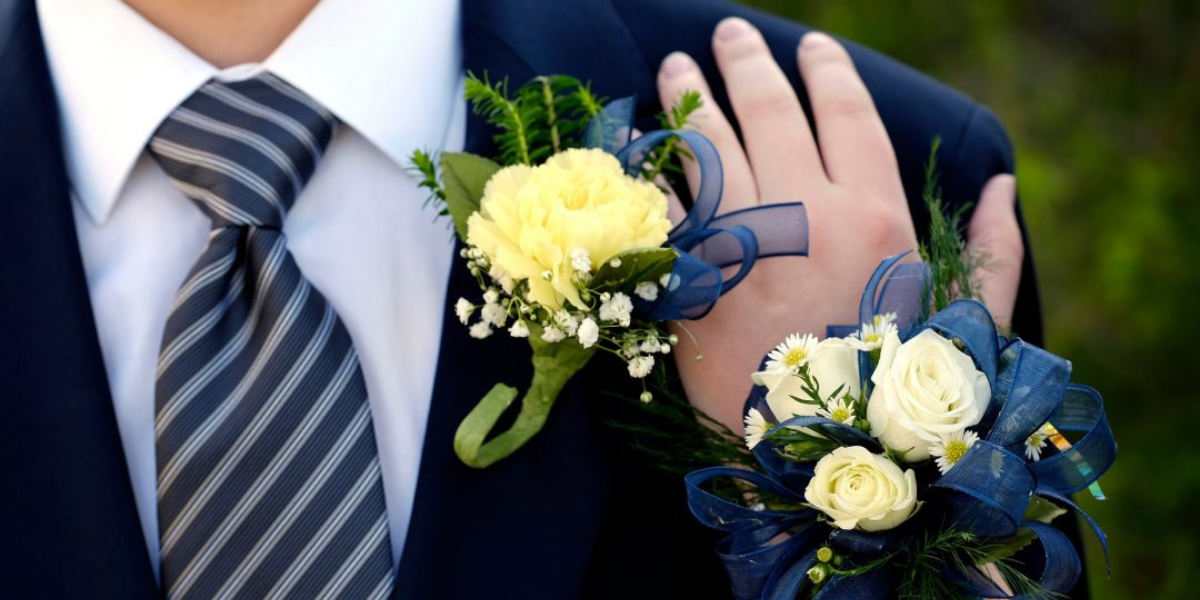In the realm of formal attire and special occasions, few elements carry the symbolic and aesthetic weight of the corsage. Often seen adorning the wrists or chests of individuals attending weddings, proms, and other significant events, corsages have maintained their relevance and allure across generations. Beyond their decorative function, corsages embody tradition, sentimentality, and the artistry of floristry. This blog explores the rich history, modern interpretations, and enduring charm of the corsage.
Table of Contents
ToggleOrigins and Historical Significance
The term “corsage” originates from the French word “cors,” meaning the body. Historically, corsages referred to the bodices of dresses, where small bouquets or sprigs of flowers were often pinned. This practice dates back centuries, with floral adornments being used to communicate various messages or symbolize specific sentiments.
In the Victorian era, corsages evolved into more elaborate forms, often incorporating delicate flowers like roses, lilies, and orchids. These were worn not just as decorative elements but as tokens of affection or symbols of social status. The act of giving and wearing a corsage became intertwined with courtship rituals and formal etiquette.
Symbolism and Tradition
Corsages hold significant symbolism in various cultures and contexts. In Western traditions, they are commonly exchanged at weddings, symbolizing love, admiration, and the bond between partners. At proms and similar events, corsages serve as tokens of appreciation or symbols of celebration, marking the importance of the occasion and the relationships involved.
Different flowers carry distinct meanings, adding layers of symbolism to corsages. For instance, roses often signify love and passion, while orchids symbolize beauty and refinement. The choice of flowers in a corsage can convey subtle messages and reflect personal preferences and sentiments.
Evolution of Corsage Styles
Over time, the styles and designs of corsages have evolved to reflect changing fashion trends and preferences. Traditional wrist corsages, worn by attaching to a bracelet or wristband, remain popular for their elegance and ease of wear. These are often preferred for formal events like weddings, where they complement the attire without overwhelming it.
In recent years, there has been a resurgence of interest in more unconventional corsage styles. Floral necklaces, where flowers are arranged to resemble a necklace, have gained popularity for their unique and striking appearance. Similarly, corsage rings, which feature miniature bouquets worn on the finger, offer a modern twist on a classic tradition.
Crafting Corsages: Artistry and Technique
The creation of a corsage is a delicate art that requires skill and creativity. Florists carefully select flowers based on color, size, and texture, ensuring they complement the wearer’s attire and personal style. The arrangement of flowers is equally important, with attention paid to balance, proportion, and symmetry.
Techniques such as wiring and taping are commonly used to secure the flowers and create a cohesive structure. Ribbons, foliage, and decorative elements like beads or pearls may be added to enhance the corsage’s visual appeal and thematic coherence.
Contemporary Uses and Trends
In contemporary times, corsages continue to be cherished for their ability to add a touch of sophistication and refinement to any formal ensemble. While weddings and proms remain primary occasions for wearing corsages, they are also increasingly favored for other events such as anniversaries, galas, and graduations.
Personalization has become a key trend in corsage design, with individuals opting for bespoke arrangements that reflect their unique tastes and preferences. Custom color schemes, thematic motifs, and even incorporating sentimental items like heirloom jewelry have become popular ways to make corsages more meaningful and memorable.
Sustainability and Ethical Considerations
As awareness of environmental impact grows, there is a rising interest in sustainable floristry practices. Many florists now offer eco-friendly options for corsages, using locally sourced flowers or incorporating elements like dried flowers and foliage. Additionally, efforts to minimize waste through careful planning and design contribute to a more sustainable approach to corsage production.
Ethical considerations also come into play, with increasing scrutiny on the supply chain and labor practices within the floral industry. Consumers are becoming more conscientious about choosing florists who prioritize fair trade practices and responsible sourcing of materials.
Conclusion:
In conclusion, the corsage continues to captivate and inspire with its timeless elegance and symbolic significance. From its origins in historical fashion to its contemporary interpretations in modern celebrations, the corsage remains a cherished tradition that bridges the past with the present. Whether worn as a gesture of love at a wedding or as a symbol of achievement at a graduation, the corsage embodies the artistry of floristry and the enduring beauty of floral craftsmanship.
As we continue to evolve and innovate in our approaches to fashion and tradition, the corsage serves as a poignant reminder of the enduring power of nature’s beauty and the meaningful connections we celebrate in life’s most special moments.
